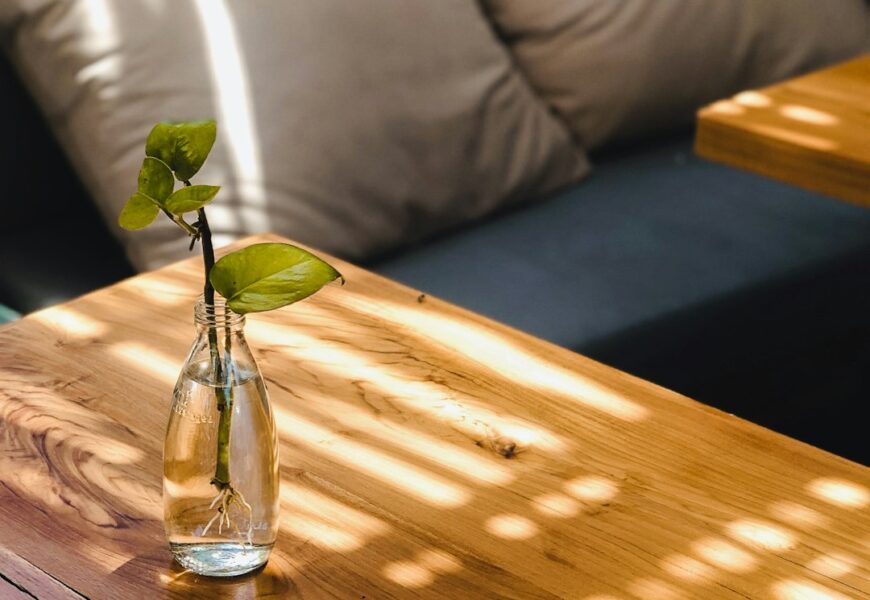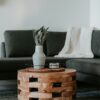Welcome to the world of interior design, where the right coffee table can transform your living area from good to great! Whether you’re starting from scratch or revamping your space, the coffee table serves as a functional centerpiece that ties everything together. In this guide, we’ll walk you through how to select a high-quality coffee table that not only matches your aesthetic but also fits perfectly with your lifestyle and needs. Get ready to make a stylish yet practical choice that will elevate your home decor.
Factors to Consider When Selecting a Coffee Table

When choosing the right coffee table for your living room, there are several crucial factors to consider. From size and material to style and durability, each element plays a vital role in both functionality and aesthetic appeal.
Size and Scale
The size and scale of the coffee table are vital in maintaining balance and functionality in your living space. It should be proportional to the surrounding furniture to create a harmonious look. A good rule of thumb is to select a table that is about two-thirds the length of your sofa and at the same height as the seat height or slightly lower. Consider the layout of the room and the space between the furniture – ideally, there should be about 18 inches between the coffee table and the sofa, enough room to walk through but close enough to reach for your drink or book.
Material and Durability
The material of your coffee table not only influences the look but also its durability and maintenance requirements. Common materials include wood, metal, glass, and composite. Each has its advantages and drawbacks:
– Wood: Offers a warm, natural feel and can range from light to dark tones; however, it may require more maintenance to prevent scratches and water rings.
– Metal: Provides a more modern and industrial look, often found in a variety of finishes. It’s typically very sturdy but can be prone to fingerprints and smudges.
– Glass: Glass tables create a sense of openness and space. They are easy to clean but can be fragile and may not be the best choice for homes with small children.
– Composite or Engineered Wood: These materials are often more affordable and come in many styles but may not last as long as solid wood or metal.
Choosing a table that fits your lifestyle and handling requirements is key to a lasting investment.
Style and Design
The style of your coffee table should complement the overall theme of your room. Whether you’re aiming for a sleek, modern look or a cozy, traditional feel, the design of your coffee table can tie the room together. Think about the shape and features – rectangular, oval, round, with or without storage options – and how these will fit into your living space. Use the table to make a statement or blend seamlessly with other elements in your room.
Popular Coffee Table Styles and Trends

As trends evolve, so do the designs of coffee tables. Whether you’re influenced by timeless aesthetics or modern innovations, there’s a style to fit every décor theme.
Mid-Century Modern
Mid-century modern coffee tables are known for their clean lines, organic curves, and minimalist silhouettes. Often made from wood or featuring a wood base with a glass top, these tables are versatile and can complement both vintage and contemporary interiors. The use of natural shapes and refined lines evokes a sense of simplicity and functionality that is core to mid-century modern design. This style often pairs well with both vibrant and subdued color schemes, making it a versatile choice for any living room.
H8: Industrial
The industrial style is characterized by a blend of raw materials such as metal, wood, and sometimes concrete. Coffee tables in this style often exhibit a rustic yet modern look, often featuring exposed construction elements like screws and wheels. These tables are hard-wearing and make a strong statement in any space. Ideal for lofts or modern homes that celebrate an edgy, unfinished look, industrial coffee tables often utilize darker colors and matte finishes.
Farmhouse
Farmhouse-style coffee tables exude comfort and casual charm. Typically crafted from wood, they often feature distressed finishes, chunky legs, and sometimes include additional elements like drawers or shelves for extra storage. The natural imperfections of wood are celebrated, adding to the rustic appeal of farmhouse tables. This style suits spaces that aim for a warm, inviting atmosphere, often complemented by soft colors, natural textures, and cozy fabrics.
Each coffee table style embodies distinct characteristics and can instantly elevate the aesthetic appeal of a room. When selecting your next coffee table, think about how it will blend with your current decor, meet your functional needs, and express your personal style. By carefully considering these factors and staying informed on current trends, you can choose a coffee table that not only looks great but also performs well in your everyday life.
Matching Your Coffee Table to Your Existing Decor
When selecting a coffee table, it’s essential to consider how well it complements the existing style and decor in your living room. A harmonious interior design can create a welcoming environment and enhance your home’s overall appeal. Here are some key aspects to focus on when matching your new coffee table to your existing decor.
Color Palette
The color of your coffee table should ideally coordinate with the color scheme of your living room. To choose the right color, consider the dominant shades in your room and decide whether you want the coffee table to blend in or stand out. For a cohesive look, select a coffee table in a color that echoes the hues of your walls, rugs, or major furniture pieces. If you prefer it to be a focal point, pick a contrasting shade that pops yet still ties in with your overall decor. For instance, a bright blue coffee walker coffee table can make a striking contrast in a predominantly neutral-colored room while still harmonizing with occasional blue decorative accents like vases or pillows.
Furniture Placement
The placement of other furniture in your living room plays a crucial role in selecting the perfect coffee table. Firstly, consider the size and layout of your space. A large, spacious room can accommodate a bigger table, while a smaller room might require something more compact to avoid overcrowding. Think about the alignment and proximity to other pieces of furniture. A good rule of thumb is to place your coffee table about 18 inches away from the sofa or chairs to allow easy movement around it. Additionally, it should be accessible from all the seating areas without creating awkward gaps or distances. Also, examine the height of your coffee table; it should be no lower than 1-2 inches from the height of the seat cushions of your surrounding furniture to maintain both aesthetic proportion and functionality.
Functionality
Aside from aesthetic considerations, think about the functional aspect of the coffee table. Assess how it will be used in your daily life and what needs it must fulfill. If your living room is a hub for family activities or social gatherings, you might want to consider a coffee table with additional features like drawers or shelves for storing magazines, remotes, and other items to keep the space tidy. If you often dine in your living room or use it as a workspace, look for a coffee table that can easily accommodate your plates, laptops, or books. Consider materials and finishes based on usage as well; for example, glass or polished wood can add a touch of elegance but may require more frequent cleaning, especially if you have young children or pets.
By carefully considering these aspects—color palette, furniture placement, and functionality—you can select a coffee table that not only complements your existing decor but also enhances the convenience and beauty of your living space.
Practical Tips for Maintaining and Cleaning Your Coffee Table
Keeping your coffee table looking like new doesn’t have to be a chore. With a few simple practices, you can maintain its beauty and ensure it remains a centrepiece in your living room for years to come.
Regular Cleaning Routine
Start by dusting your table regularly to prevent dust particles from scratching the surface. Use a soft, microfiber cloth or feather duster. For deeper cleaning, depending on the material of your coffee table, the right solution will make a difference:
– For glass tables, use a mixture of water and vinegar to keep it streak-free.
– Wooden tables benefit from special wood cleaners or a homemade solution of water and mild soap. Avoid letting water sit on the surface.
Immediate Attention to Spills
Spills are inevitable, but how you handle them can prevent permanent stains:
– Blot spills immediately with a soft, dry cloth. Avoid wiping as this can spread the spill.
– For stubborn stains, use a cleaner appropriate for the material. Glass tables can handle more aggressive cleaning agents, but always test a small area first.
Hially applying a protective coating, such as polish for wood or a special glass cleaner for glass tables, can add an extra layer of protection against wear and tear.
By following these maintenance tips, your coffee table will not only look fabulous but will also serve as a durable, lasting piece of furniture in your home décor.









